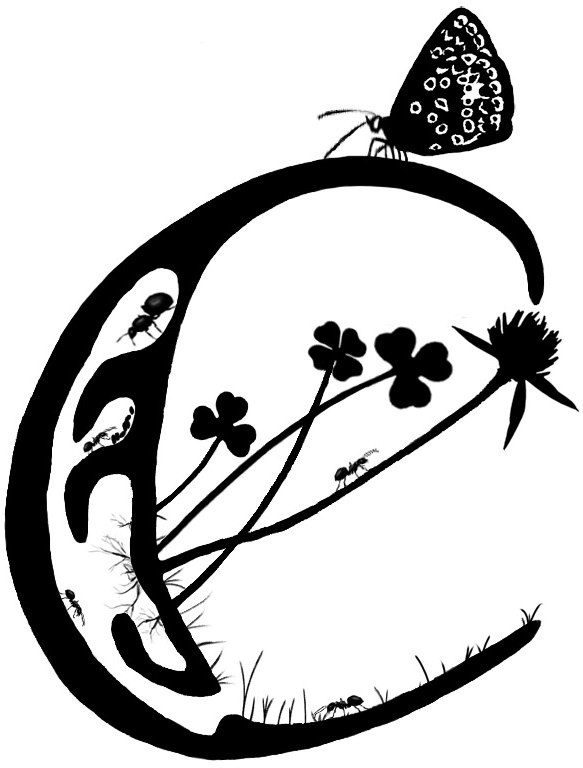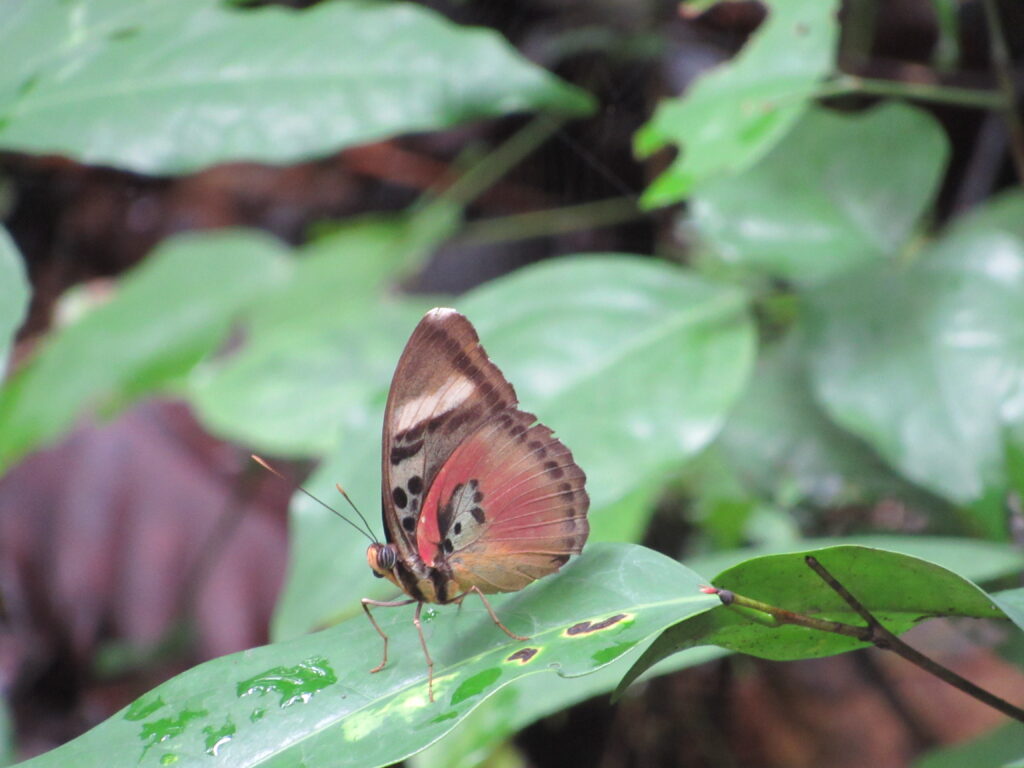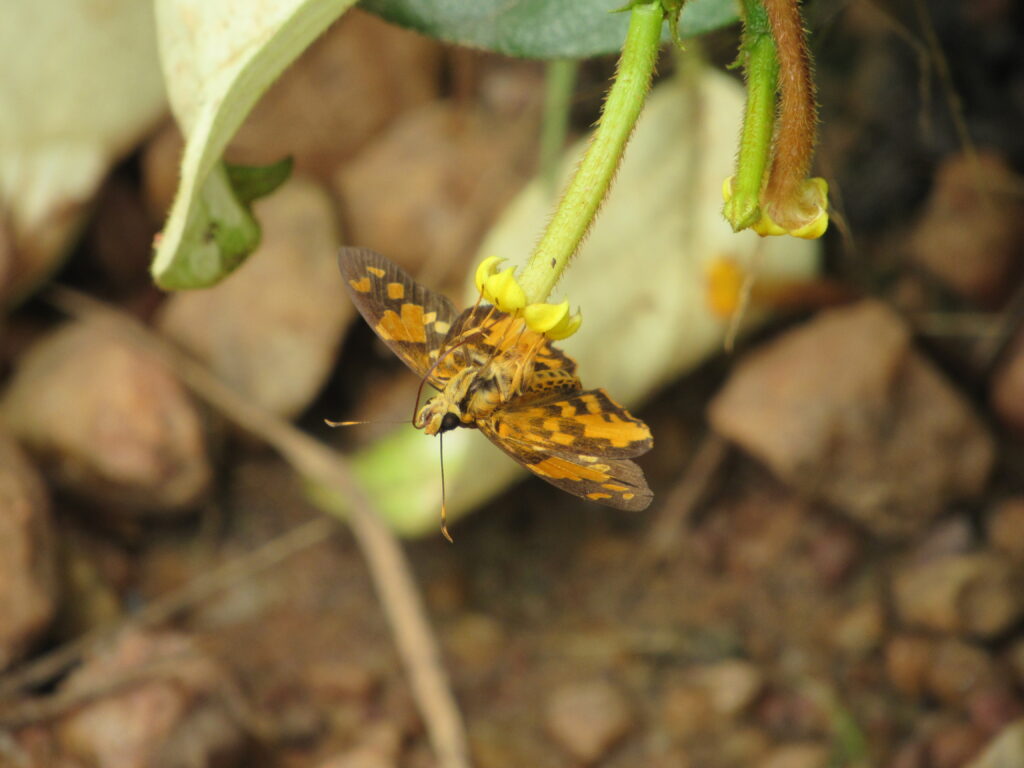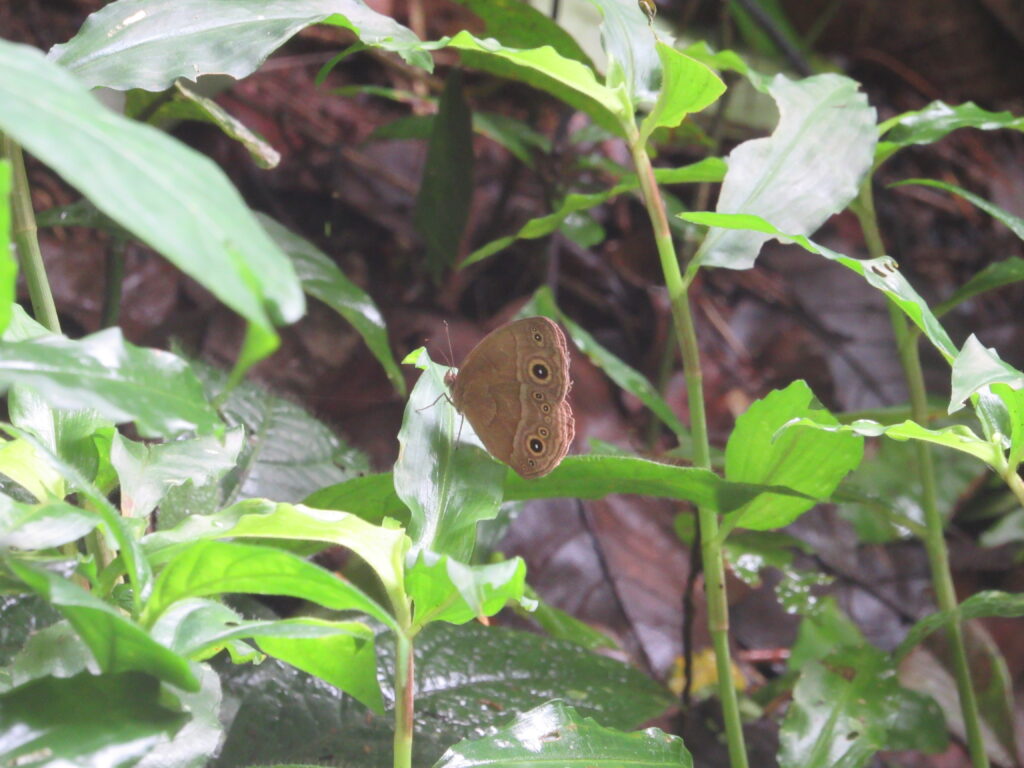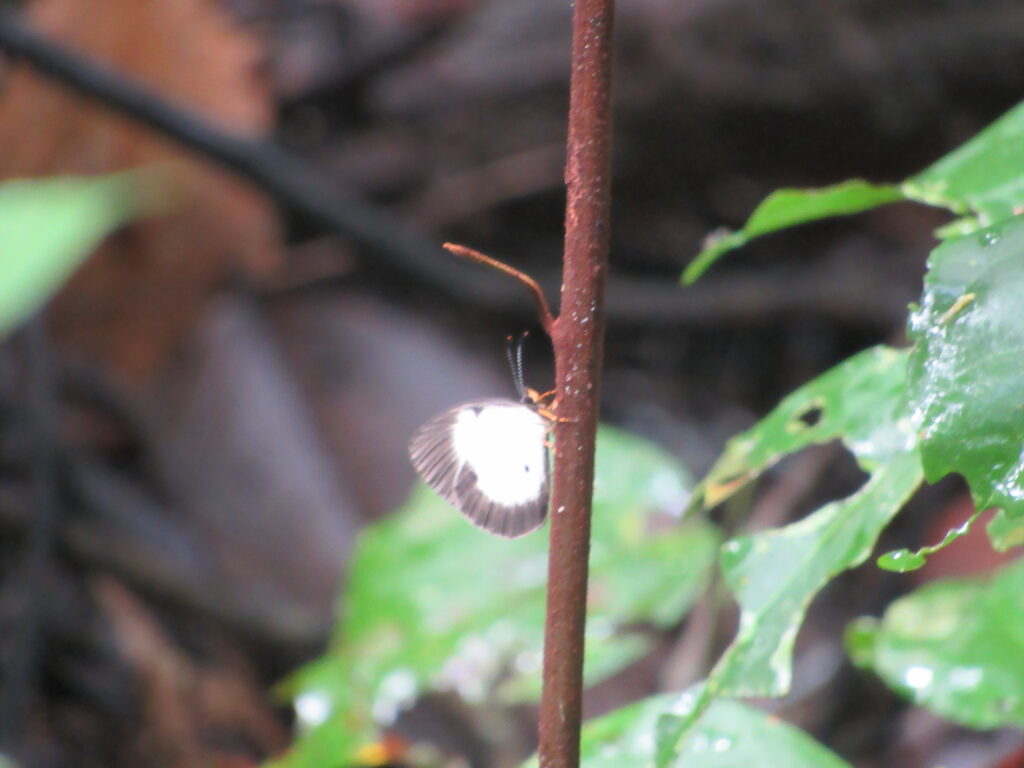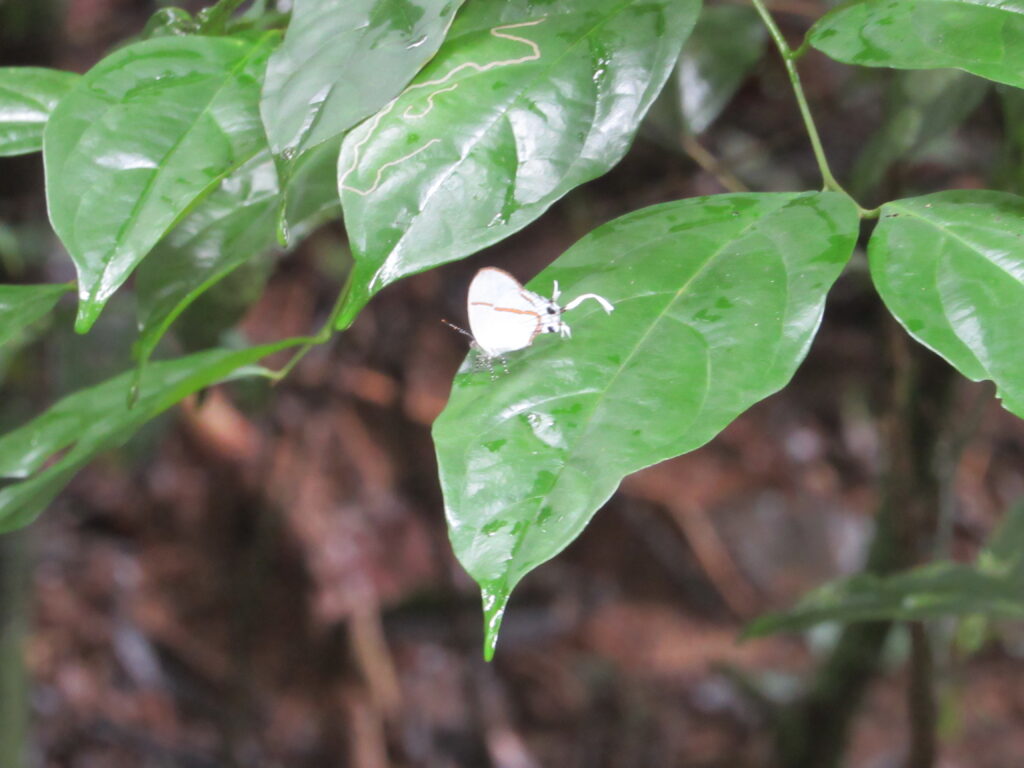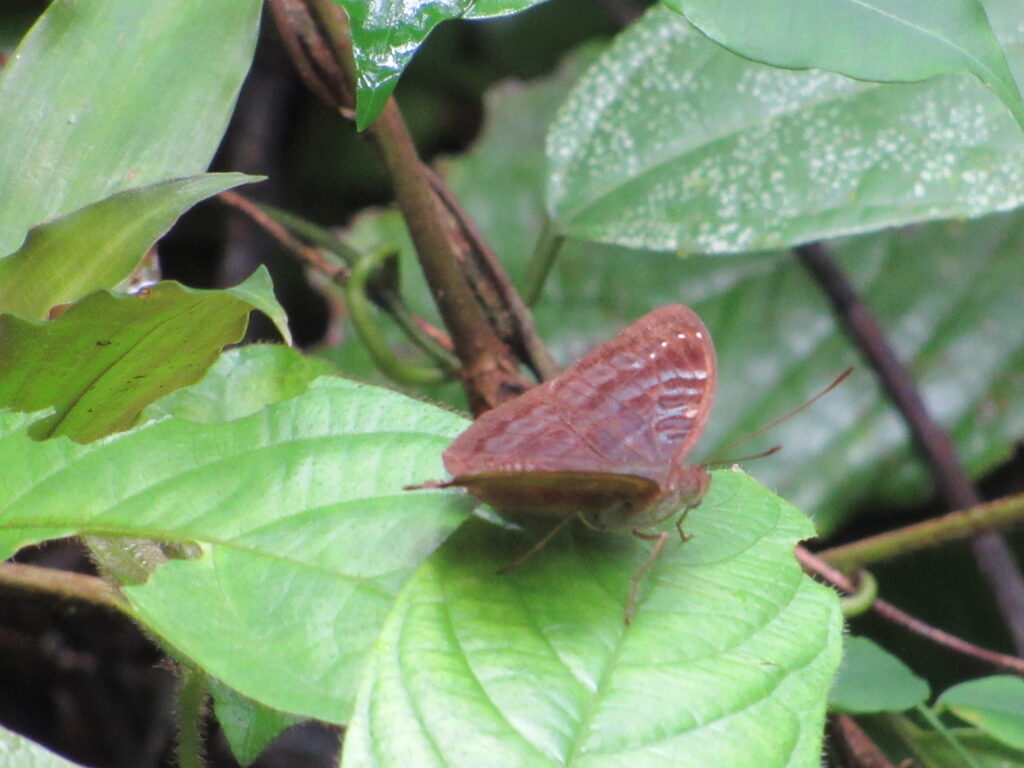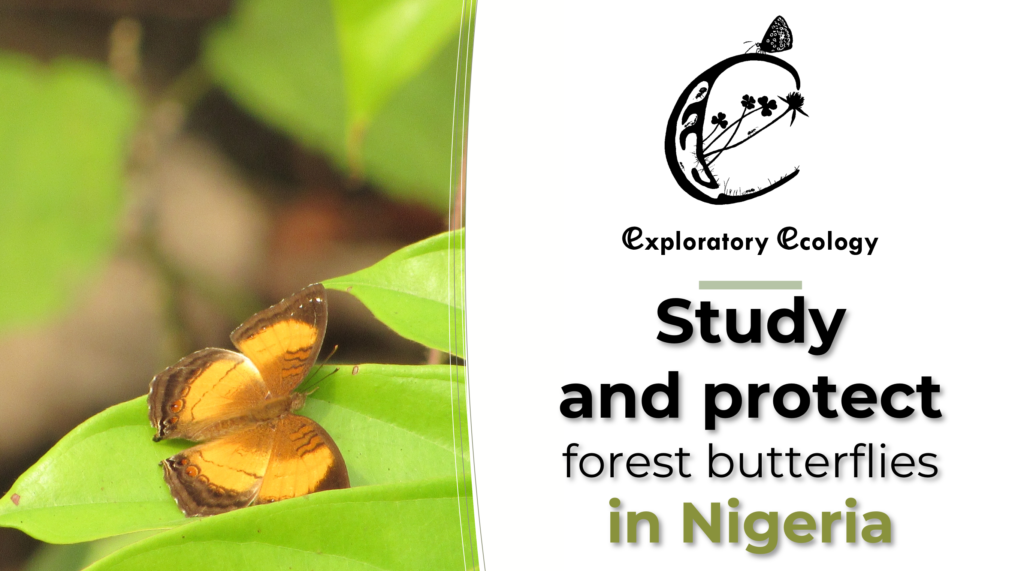
Presentation
Nigeria has an exceptional biodiversity, among this, butterfly species. Butterflies have an essential role for the good health of ecosystems, in particular forests threatened by deforestation, climate change, etc. Indeed, butterflies pollinate plants allowing their reproduction. The development of knowledge on these species is therefore essential to set up conservation and awareness-raising actions to protect forests in Nigeria, particularly in the Cross River National Park and the Omo Forest Reserve.
Project impact
The project will have an impact 1) on developing scientific knowledge of butterfly species and their preferred plants in protected forests, more particularly in the Cross River National Park and the Omo Forest Reserve, 2) to propose actions for conservation of these species and their habitats in the forests of Nigeria, and raising public awareness of their protection, 3) to involve different actors from the territory of Nigeria and Africa.
Project origin
Following the Exploratory Ecology’s publications of butterfly species photos on a facebook group, Mr. Ekpah Ojonugwa entomologist at the Nigerian Conservation Foundation contacted this French association for biodiversity protection on November 18, 2019. The meeting between these butterfly enthusiasts led to the following observation. Nigeria contains exceptional biodiversity in forests including butterfly species. But we currently lack the knowledge to protect these species. These exchanges therefore led to the development of a Franco-African collaboration on a study project on butterflies and forests in Nigeria.
Team project
Main team is made up of :
1) Ekpah Ojonugwa, graduate of a scientific master’s degree in applied entomology from the University of Lagos, works for Nigerian Conservation Foundation, which will carry out the field work, identification of species ;
2) Fanny Mallard, president of the Exploratory Ecology association, a lepidopterist with PhD in ecology, who will provide scientific support for production and communication;
3) Sven Aël Guen, after studying DUT Biological Engineering with Environmental Engineering option, graduate in Computer Science, administrator and networks, technical manager of the Exploratory Ecology association, who will bring his technical expertise for the IT part.
The team is reinforced by people from partner organizations in Africa who are technical, scientific and awareness-raising skills :
- Federal Ministry of Information and Culture,
- National Park Service,
- Teams of Cross River National Park and Omo Forest Reserve,
- Organizations of Wildlife Conservation Society and Wildlife for Africa Conservation Initiative,
- Centre d’Etudes et de Recherches Entomologiques Béninois – Alain Coache entomologist (Entomological Studies and Research Center in Benin)
Scientific researchers validate the protocol like the researcher Oskar Brattström of the University of Cambridge, and determination of species like the researcher Steve Collins, of the research institute of the African butterflies.

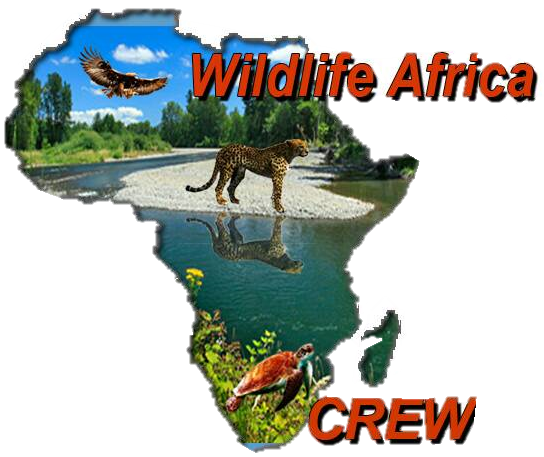
Objectives
This project called ExplorCollect in Nigeria participating in protection of forests in Nigeria is divided into 3 objectives:
- Objective 1 : Species inventory
The objective of this research is to increase knowledge on inventory of lepidopteran species in Nigeria. The species inventory will make it possible to identify and perhaps discover new species.
- Objective 2 : Species monitoring
The butterflies monitoring will compare diversity between two forests with different microclimates, establish a reference of populations in these sites and monitor the impact of climate change over the long term.
- Objective 3 : Conservation action
The nectariferous plants favored by butterflies will be identified. This knowledge would help organizations whose objective is the conservation of species and raising public awareness of the protection of these species.
Species inventory of Cross river national park
From January 21 to 25, 2020, first butterfly inventory was conducted in Cross River National Park in Nigeria.
Ce parc national est la plus grande zone de forêt tropicale au Nigéria. Cette zone d’étude a été sélectionnée car il s’agit d’un haut lieu de biodiversité de renommée internationale. Selon WWF, l’écorégion qui chevauche la frontière Cameroun-Nigéria est particulièrement riche en espèces de papillons forestiers en raison du microclimat favorable qui y règne. Pour ce premier inventaire des espèces , 4 points ont été échantillonnés (cf. figure ci-dessous).
This national park is the largest area of tropical forest in Nigeria. This study area was selected because it is an internationally renowned biodiversity hotspot. According to WWF, the ecoregion which straddles Cameroon-Nigeria border is particularly rich in species of forest butterflies due to the favorable microclimate. For this first inventory of species, 4 points were sampled (see figure below).

Butterflies were captured daily using a butterfly net. The collected species were carefully placed in a triangular envelope. Identification was made at the end of each day using the book of West African butterflies “Larsen, T.B. (2005a). Butterflies of West Africa. Apollo Books, Svendborg, Denmark. 595 pp + 135 color plates”. A total of 35 butterfly specimens were collected, including 29 species of butterflies and 1 species of moth. The species collected are listed below.
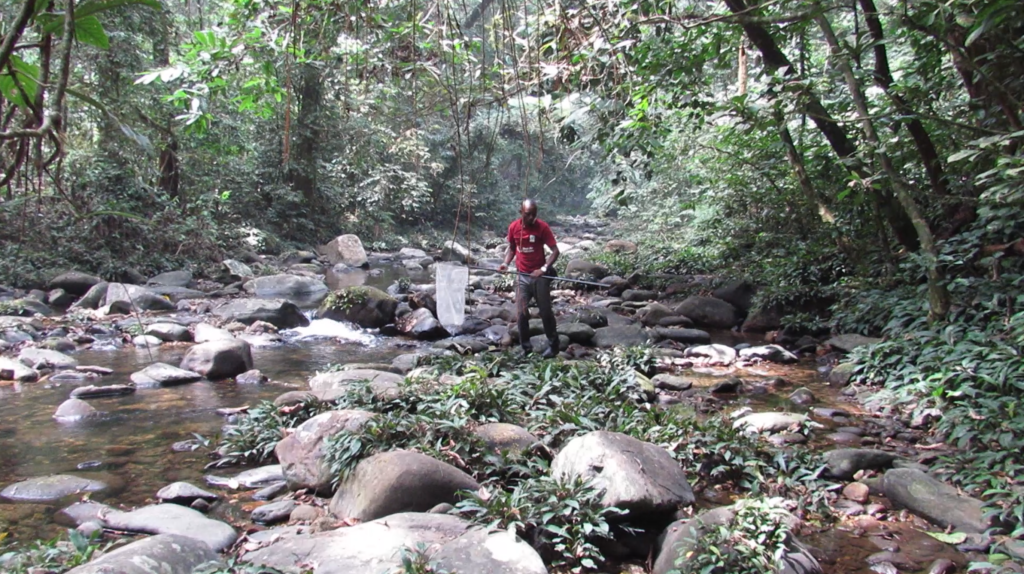
The species observed are the following: Acraea peneleos, Acraea polis, Alytarchia amanda, Amauris niavius, Belenois theora, Bicyclus dorothea, Catuna crithea, Charaxes etheocles, Cymothoe beckeri, Danaus chrysippus falcippus, Elymniopsis bammakoo, Euphaedra fucora, Euptera elabontas, Eurema hecabe, Euriphene tadema, Graphium policenes, Hypolimnas anthedon, Hypolimnas misippus, Iolaus sp., Junonia oenone, Junonia sophia, Junonia terea, Melanitis leda, Mylothris chloris, Mylothris schumanni, Palla decius, Phalanta eurytis, Precis octavia, Precis pelarga, Sevenia occidentallium.
- Danaus chrysippus
Danaus chrysippus is common (Larsen, 2005) widely distributed in Africa and can be observed in the south of France
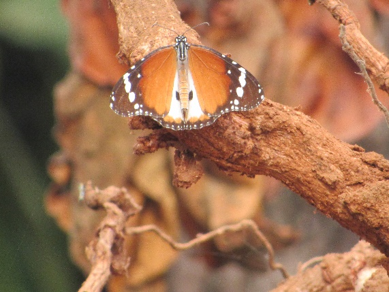
- Junonia terea
The main habitat of Junonia terea consists of disturbed forest environments. It is therefore a good indicator of disturbance of forest species (Larsen, 2005).
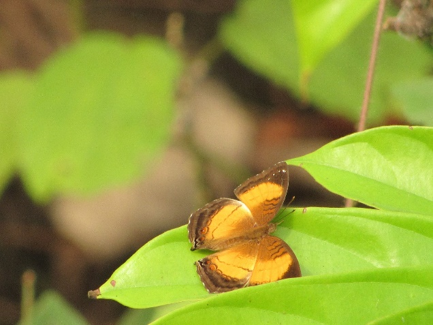
- Precis octavia
Precis octavia is a common species in Nigeria. In the Calabar region, the forms of dry season do not begin to appear until December (Larsen, 2005).
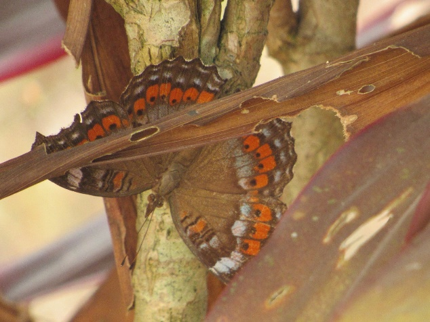
- Precis pelarga
Precis pelarga is a fairly common butterfly from the forests and dense savannah of Guinea which has also adapted well to disturbed habitats (Larsen, 2005). The host plant in Côte d’Ivoire is Solenostemon rotundifolius (Vuattoux and Blandin 1979 In: Larsen, 2005).
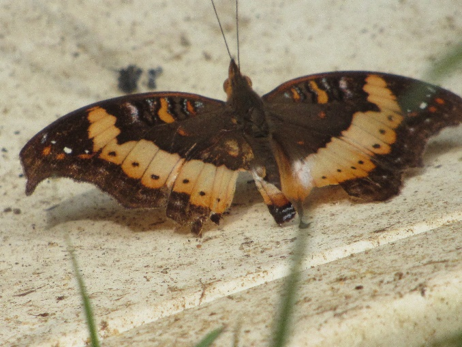
- Amauris niavius
Amauris niavius is a species that absorbs alkaloids from various plants, making it toxic to predators (Sáfián and Warren, 2015).
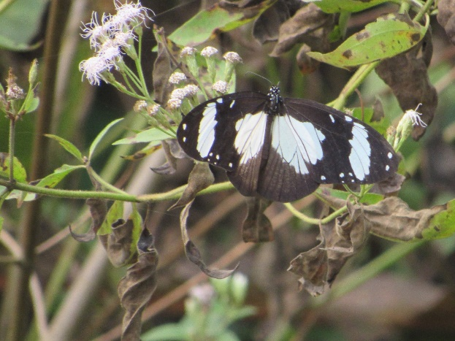
- Bicyclus dorothea
Both females and males of Bicyclus dorothea are attracted to fermenting fruits. The caterpillars feed on various Poaceae (Sáfián and Warren, 2015).
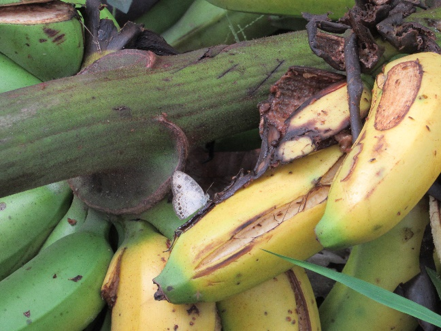
Species inventory of the Omo forest reserve
In February 2020, an inventory using the same methodology as the previous inventory was carried out in the Omo forest reserve.

The species observed are the following: Appias sabina , Aterica galene, Bebearia flaminia, Bebearia innocua, Bebearia omo, Bebearia zonaria, Cymothoe coccinata, Cymothoe egesta , Cymothoe sangaris, Euphaedra ruspina, Eupheadra ceres, Eupheadra hebes, Eupheadra medon, Eupheadra themis, Eurema floricola, Euryphura chalcis, Graphium policenes, Junonia terea, Lampides boeticus, Leptotes pirithous, Mylothris rhodope, Nepheronia pharis, Nepheronia thalassina, Neptis alta, Neptis paula, Papilio cynorta, Papilio cyproeofila, Protogoniomorpha parhassus, Thermoniphas micylus.










On September 15, 2020, a second inventory was carried out. The following 10 species were observed.
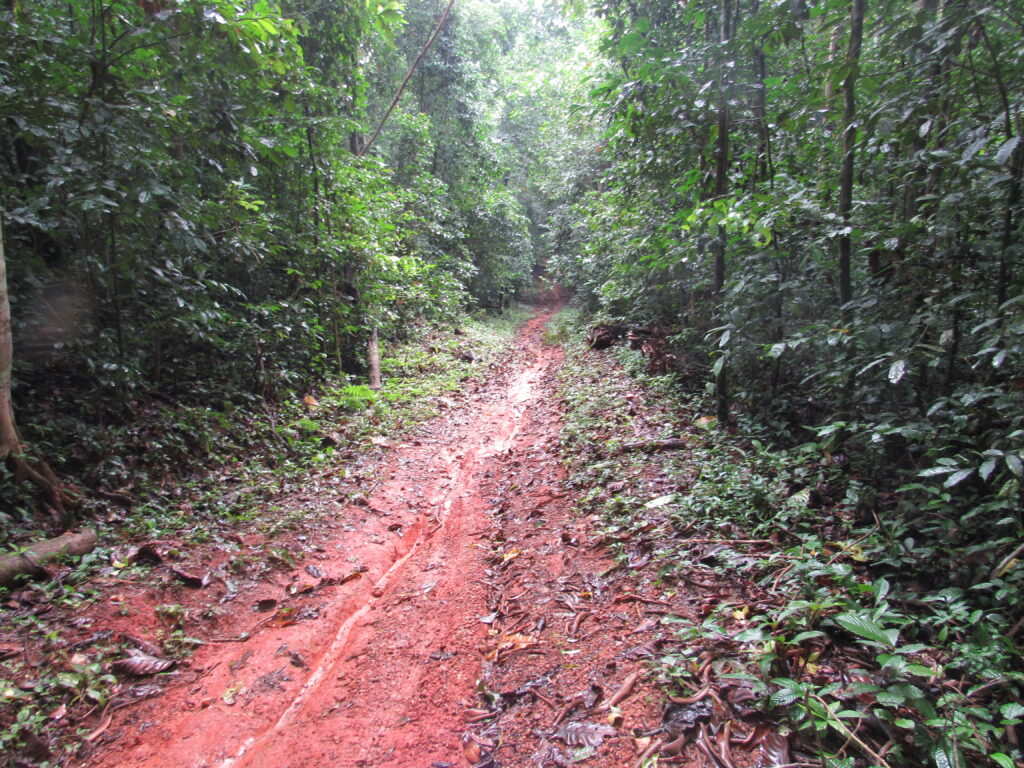
- Bebearia oxione
This is a rather scarce butterfly, which occurs along forest paths but it is less tolerant to habitat degradation (Larsen, 2005).
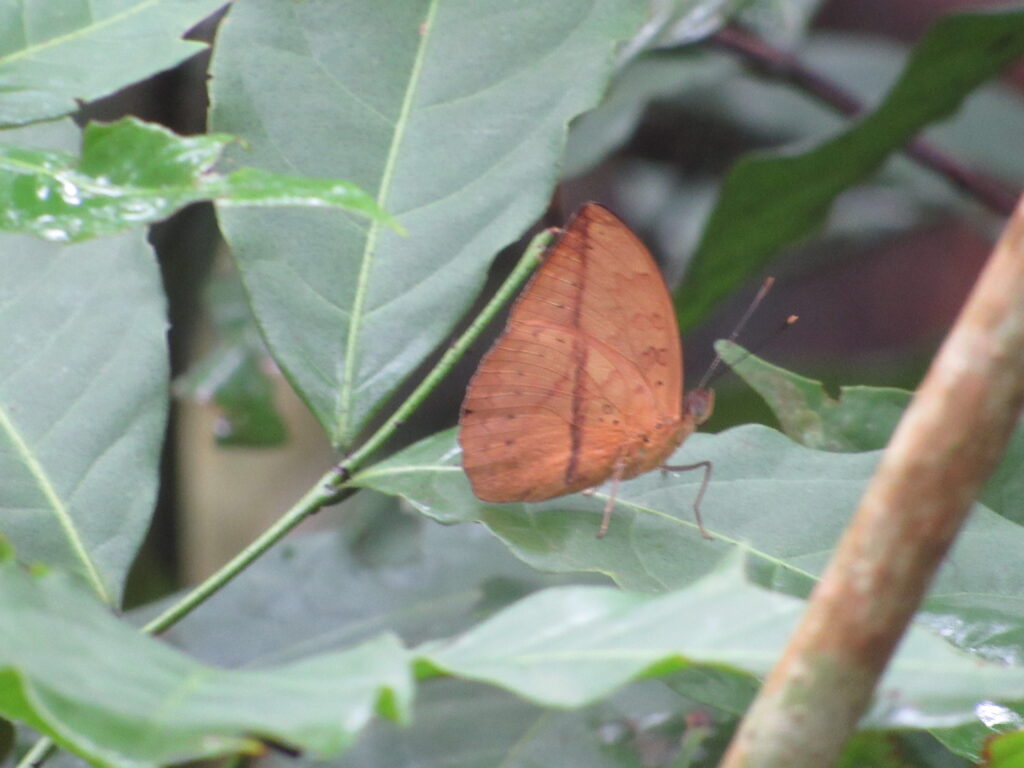
- Junonia stygia
This is more of a forest butterfly than the other Junonia terea, mostly found in disturbed area of forests and in secondary areas with good shade. The species is not that common and seems to be somewhat localized (Torben, 2005).
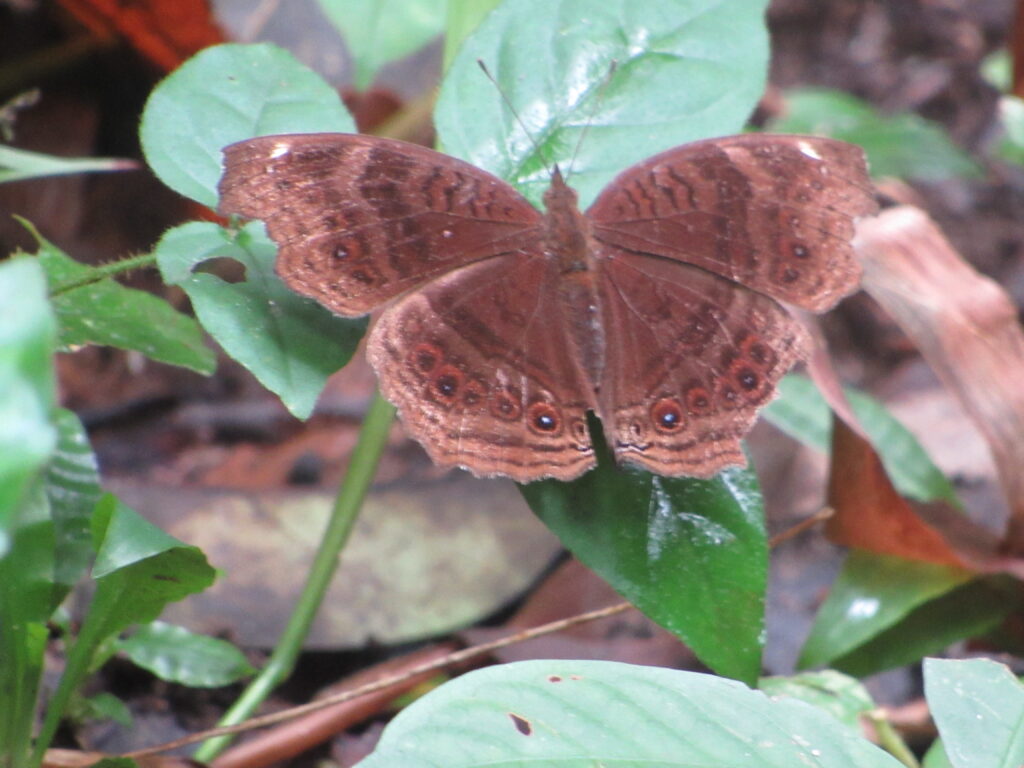
- Cynandra opis
This is fairly common butterfly and the habitat includes most forest types and it does relatively well in disturbed areas, provided a canopy remains (Larsen, 2005).
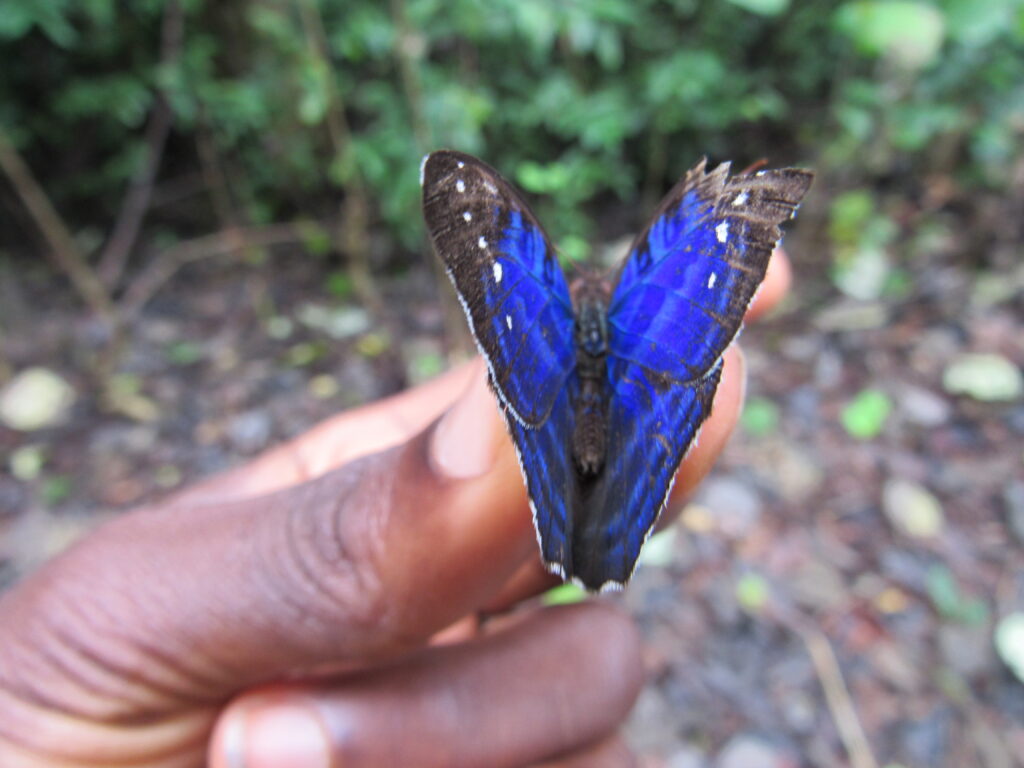
- Bicyclus martius sanaos
This is a common forest butterfly also found in secondary growth. Males come out into sunshine along forest paths where fighting and courtship take place (Larsen, 2005).
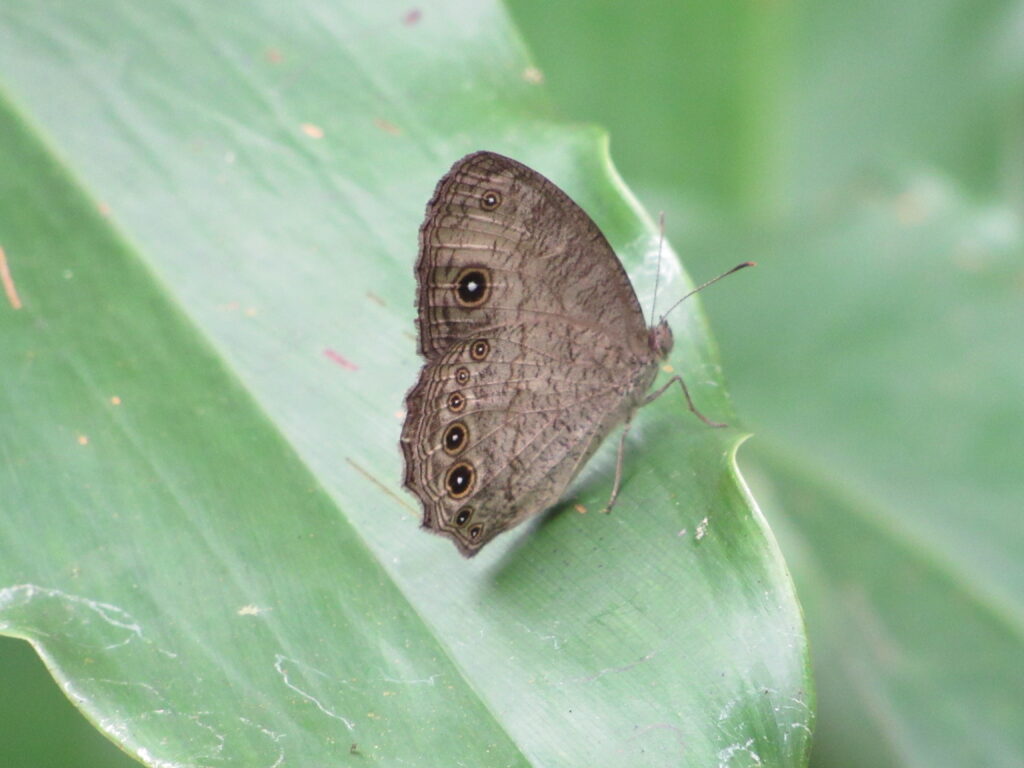
- Hypolimnas salmacis
CThis is a common and adaptable butterfly found in somewhat disturbed habitat. Males perch in forest paths and forest edges, often high up while females are usually seen searching for host-plant low down (Larsen, 2005).

- Protogoniomorpha parhassus
This is a common forest butterfly and yet one of the most spectacular in Africa (Larsen, 2005).
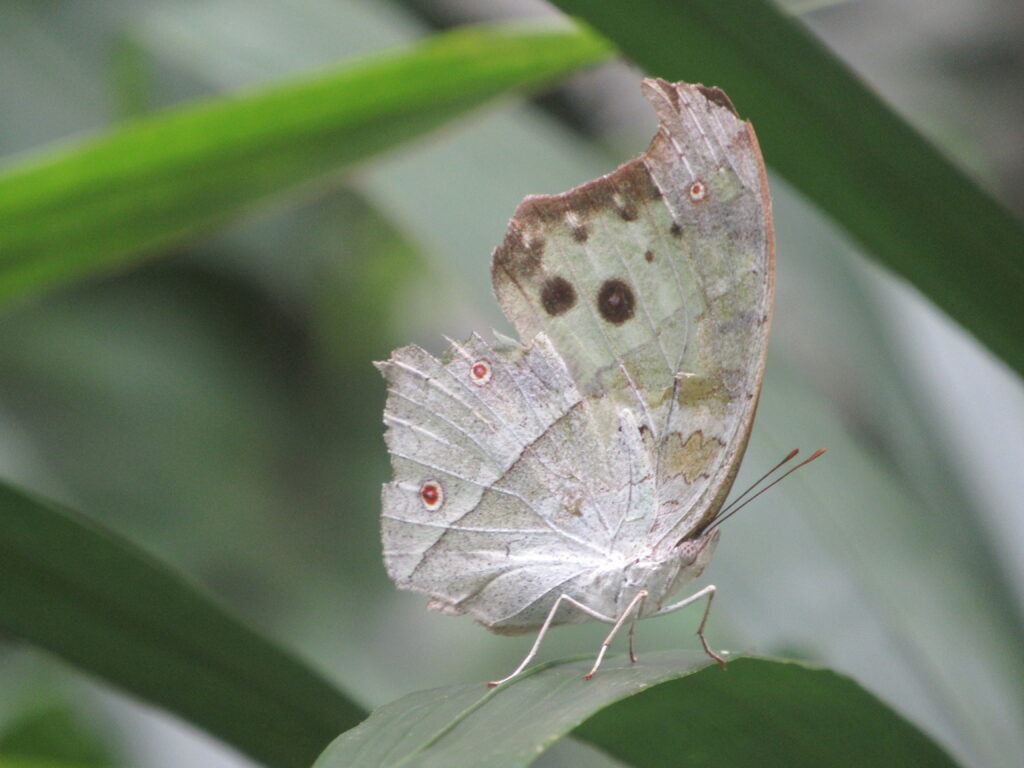
- Catuna angustatum
This species is somewhat tied to forest in reasonable condition and tends to be slightly scarce (Larsen, 2005).
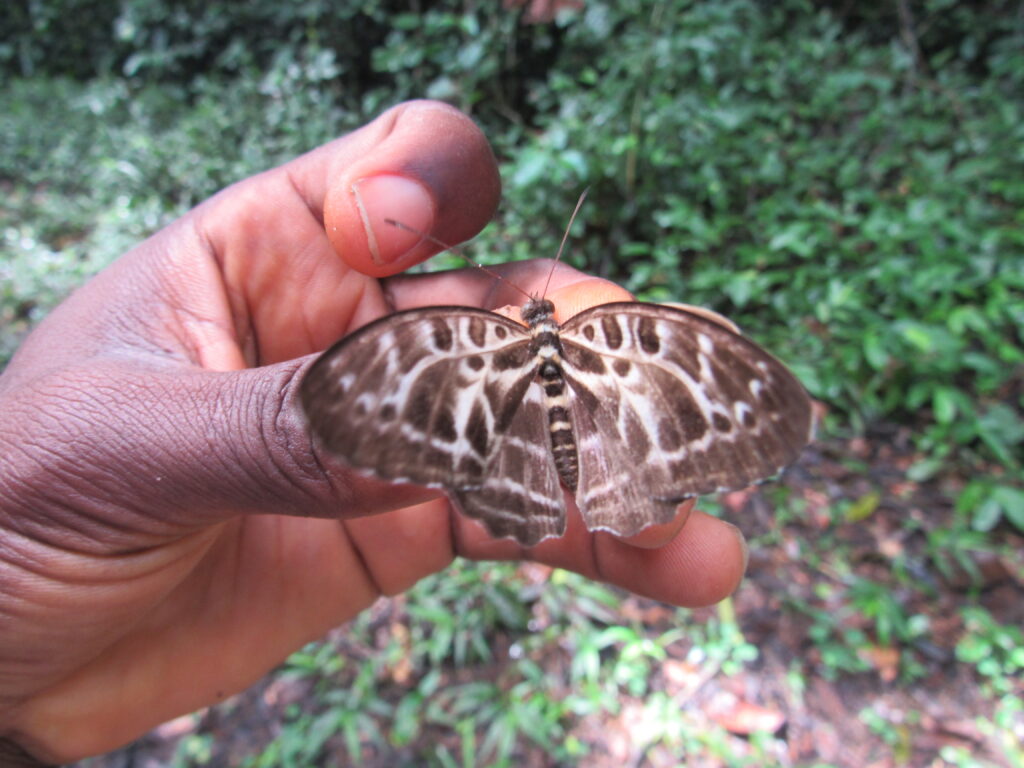
- Papilio nireus
This is a common forest butterfly that adopts well to disturbed forest areas (Larsen, 2005).

- Aterica galene
This is a common forest butterfly that adopts well to disturbed forest areas. Both sexes come to fruit and not to flowers (Larsen, 2005).
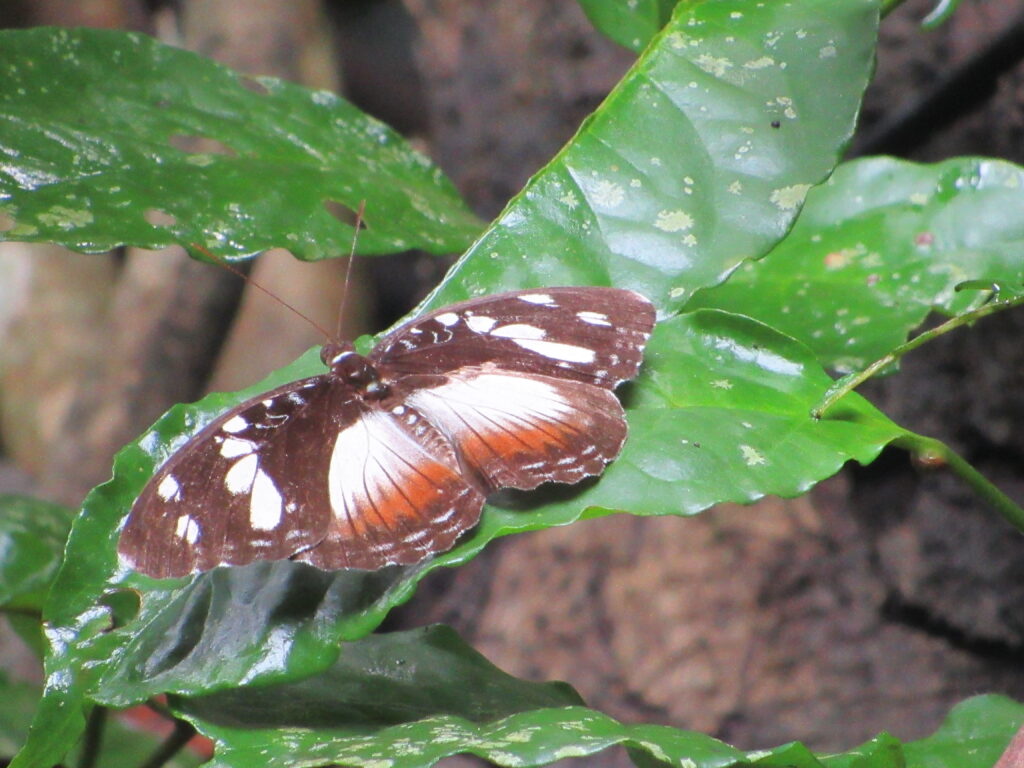
- Salamis cacta
This butterfly exhibit a distinct camouflage in west Africa and are relatively common. Males are perchers (Larsen, 2005).
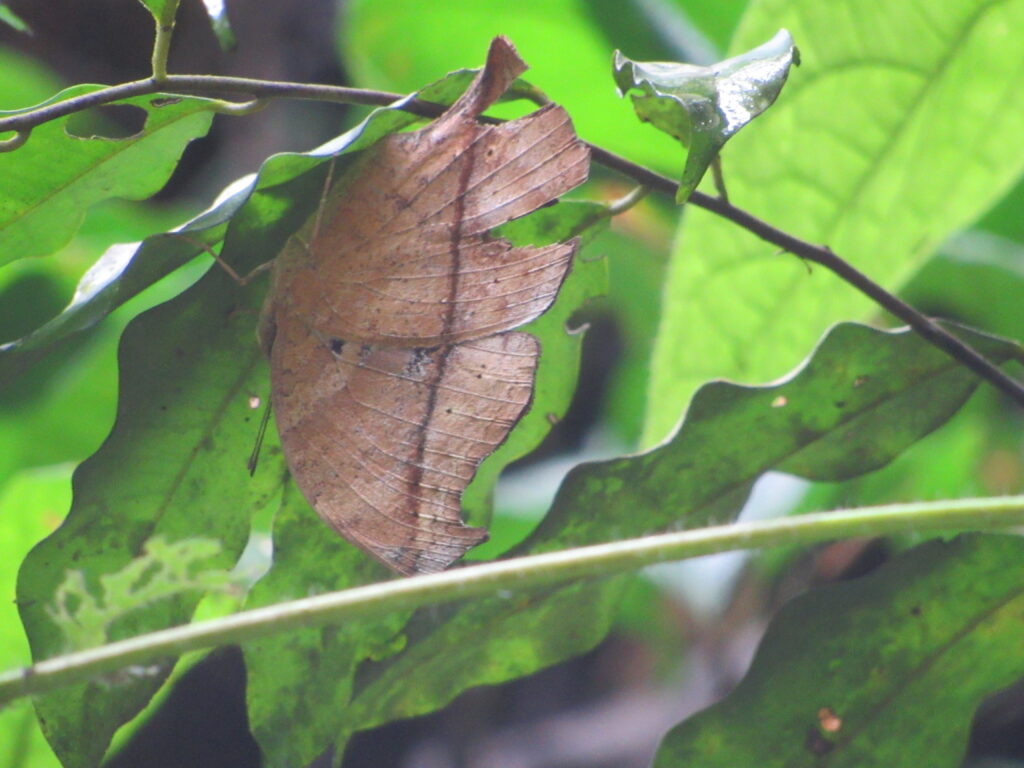
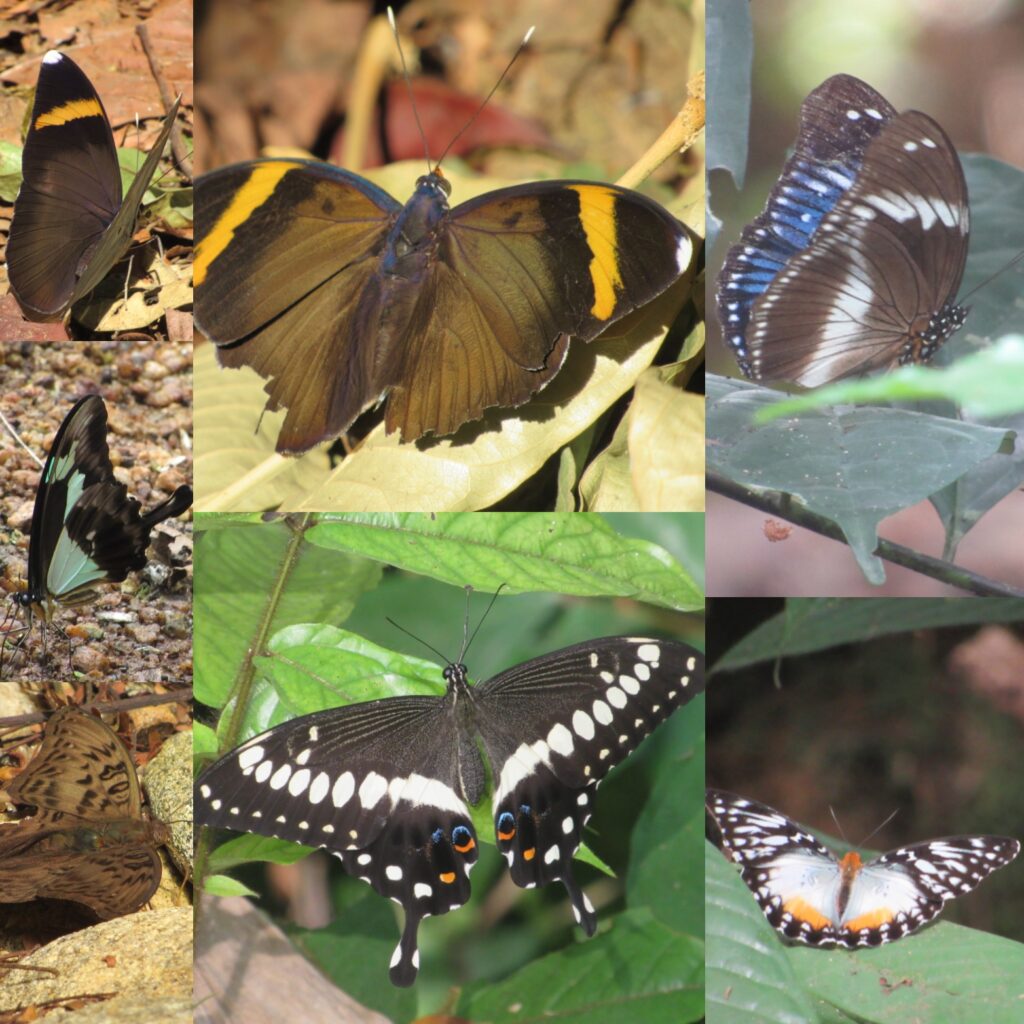
On May 21, 2021, a new inventory session made it possible to observe the following species.







